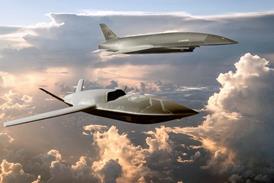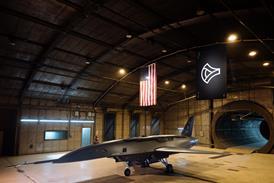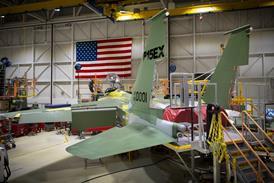Siva Govindasamy/Tokyo
Boeing is reviewing how and how much of its aircraft production process is outsourced to ensure minimal disruption to the final assembly line should a supplier face problems.
This comes after the earthquake and tsunami in Japan in March had a significant impact on the global supply chain of various products manufactured in the country.
About 35% of the Boeing 787 is developed and manufactured by Japanese companies, including Mitsubishi Heavy Industries, Kawasaki Heavy Industries and Fuji Heavy Industries.
While the airframer says there was no significant impact after the March 11 disaster, Boeing Commercial Airplanes chief Jim Albaugh says the company is rethinking its relationship with suppliers. This includes studying dual sources for some critical parts and ensuring it has the capability to manufacture some of them in-house.
 |
|---|
© JonOstrower |
Boeing is taking another look at how much of its production will be taken on by other companies |
"We are going to redraw the lines on what we do ourselves and what we don't," Albaugh said. "We are going to take a hard look, going forward, on the relationship with our suppliers.
"It makes sense for Boeing to have within the capability to produce some of the parts that are outsourced. So if a supplier gets in trouble, we can help," he added as the 787 began service-ready operational validation in Japan. "We want to make very sure that, in the future, we have a production system that is not impacted by natural catastrophe that could occur anywhere in the world."
The earthquake, however, also shows the "importance" of not having all the manufacturing centralised in one location, he added. There was no turning back from using suppliers around the world, Albaugh said. "We've moved up the value chain," he added.
"We must make sure that we have the expertise in all things, but we are never going to build the whole aircraft ourselves."
Japanese manufacturers such as MHI, KHI and FHI will continue to play a major role in the development and manufacturing of Boeing aircraft, he said.
"We have been doing business with Japan for the last 50 years, and they have all done a great job for us. Their response to the earthquake has been phenomenal, and they have done all they can to reduce the impact."
The 787 programme, which has been delayed by three years because of various design and production problems, finally appears to have turned a corner, Albaugh said. The company had 835 orders at mid-June, and the production rate will be increased from two aircraft a month to 2.5 by end-2011 and 10 by 2013 to meet the demand.
ANA chief executive Shinichiro Ito said the carrier, which has ordered 55 787s, will receive its first in August or September. It aims to taken delivery of 14 by the end of the current fiscal year on 31 March 2012, and another 10 in the following fiscal year.
"I asked [Jim Albaugh] how the delivery process is going, and I believe in the confidence with which he told me that everything was going to be fine," Ito said.
Albaugh would not commit to meeting the schedule but said the production line was capable of coping with the deadlines.
"We are confident that we can safely meet the demand and commitments to the customers. We have a plan in place to meet the delivery schedules. We may go up even higher than the rate of 2.5 airplanes a month. However, we are not going to up the rate until we are sure that the factory can meet the targets. We have to take a measured approach to this process," he added.
Source: Flight International























